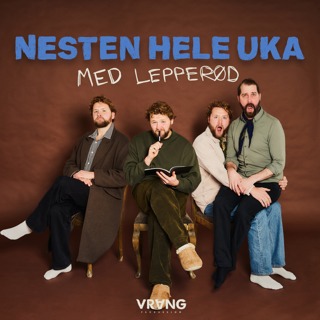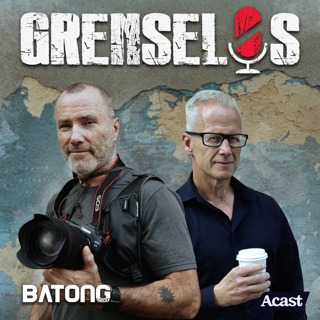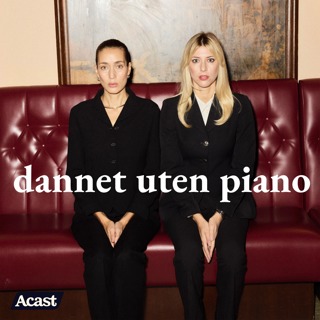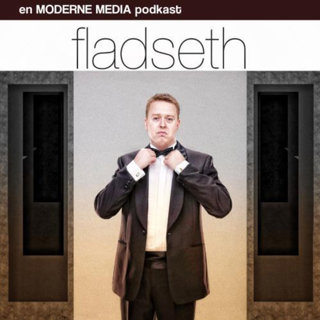
Tiffany Earley-Spadoni, "Landscapes of Warfare: Urartu and Assyria in the Ancient Middle East" (UP of Colorado, 2025)
Landscapes of Warfare: Urartu and Assyria in the Ancient Middle East (University Press of Colorado, 2025) by Dr. Tiffany Earley-Spadoni offers an in-depth exploration of the Urartian empire, which occupied the highlands of present-day Turkey, Armenia, and Iran in the early first millennium BCE. Lesser known than its rival, the Neo-Assyrian empire, Urartu presents a unique case of imperial power distributed among mountain fortresses rather than centralized in cities. Through spatial analysis, the book demonstrates how systematic warfare, driven by imperial ambitions, shaped Urartian and Assyrian territories, creating symbolically and materially powerful landscapes. Dr. Earley-Spadoni challenges traditional views by emphasizing warfare’s role in organizing ancient landscapes, suggesting that Urartu’s strength lay in its strategic optimization of terrain through fortified regional networks. Using an interdisciplinary approach that includes GIS-enabled studies and integrates archaeological, historical, and art-historical evidence, she illustrates how warfare was a generative force in structuring space and society in the ancient Middle East. Landscapes of Warfare situates Urartu’s developments within the broader context of regional empires, providing insights into the mechanisms of warfare, governance, and cultural identity formation. This interview was conducted by Dr. Miranda Melcher whose book focuses on post-conflict military integration, understanding treaty negotiation and implementation in civil war contexts, with qualitative analysis of the Angolan and Mozambican civil wars. You can find Miranda’s interviews on New Books with Miranda Melcher, wherever you get your podcasts. Learn more about your ad choices. Visit megaphone.fm/adchoices Support our show by becoming a premium member! https://newbooksnetwork.supportingcast.fm/military-history
4 Sep 58min

Robert Ivermee, "Glorious Failure: The Forgotten History of French Imperialism in India" (Oxford UP, 2025)
This is a powerful new account of a chapter in history that is crucial to understand, yet often overlooked. For 150 years, from the reign of Louis XIV to the downfall of Napoleon, France was an aggressive imperial power in South Asia, driven by the pursuit of greatness and riches. Through their East India company and state, the French established a far-reaching empire in India, only to see their dominant position undermined by conflict with Indian rulers, competition from other European nations, and a series of fatal strategic errors. Exploding the myth of a benign French presence on the subcontinent, Robert Ivermee's extensive research reveals how France's Indian empire relied on war-making, conquest, opportunistic alliances, regime change and slavery to pursue its ambitions. He considers influential French figures' reactions to the collapse of the imperial project, not least their deployment of new ideas, like freedom and the rights of man, to justify fresh ventures of domination--even as colonial authorities failed to acknowledge the equality of French India's diverse indigenous peoples, both before and after the French Revolution. From great power rivalry to informal empire and entrenched inequalities, Glorious Failure: The Forgotten History of French Imperialism in India (Oxford UP, 2025) tackles topics that remain vital and urgent in today's world. Learn more about your ad choices. Visit megaphone.fm/adchoices Support our show by becoming a premium member! https://newbooksnetwork.supportingcast.fm/military-history
2 Sep 55min

Alice Lovejoy, "Tales of Militant Chemistry" (U California Press, 2025)
In Tales of Militant Chemistry (U of California Press, 2025), Alice Lovejoy tells the untold story of film as a chemical cousin to poison gas and nuclear weapons, shaped by centuries of violent extraction. The history of film calls to mind unforgettable photographs, famous directors, and the glitz and hustle of the media business. But there is another tale to tell that connects film as a material to the twentieth century's history of war, destruction, and cruelty. This story comes into focus during World War II at the factories of Tennessee Eastman, where photographic giant Kodak produced the rudiments of movie magic. Not far away, at Oak Ridge, Kodak was also enriching uranium for the Manhattan Project--uranium mined in the Belgian Congo and destined for the bomb that fell on Hiroshima. While the world's largest film manufacturer transformed into a formidable military contractor, across the ocean its competitor Agfa grew entangled with Nazi Germany's machinery of war. After 1945, Kodak's film factories stood at the front lines of a new, colder war, as their photosensitive products became harbingers of the dangers of nuclear fallout. Following scientists, soldiers, prisoners, and spies through Kodak's and Agfa's global empires, Lovejoy links the golden age of cinema and photography to colonialism, the military-industrial complex, radioactive dust, and toxic waste. Revelatory and chilling, Tales of Militant Chemistry shows how film became a weapon whose chemistry irrevocably shaped the world we live in today. Learn more about your ad choices. Visit megaphone.fm/adchoices Support our show by becoming a premium member! https://newbooksnetwork.supportingcast.fm/military-history
2 Sep 36min

Andrew Fialka, "Hope Never to See It: A Graphic History of Guerrilla Violence during the American Civil War" (U Georgia Press, 2025)
Hope Never to See It: A Graphic History of Guerrilla Violence during the American Civil War (U Georgia Press, 2025) by Dr. Andrew Fialka illustrates two exceptional incidents of occupational and guerrilla violence in Missouri during the American Civil War. The first is a Union spy's two-week-long murder spree targeting civilians, and the second is a pro-Confederate guerrillas' mutilation of almost 150 U.S. troops.The men leading the atrocities (Jacob Terman, alias Harry Truman, and “Bloody" Bill Anderson) weren't so different. Both the Union spy and the infamous Confederate guerrilla claimed to be avenging the deaths of their families, operated under orders from military officials, and were hard drinkers. Their acts outline the terror inflicted on both sides of the struggle.This book's use of sequential art, illustrated by Anderson Carman, displays these grisly realities to mute the war's glorification and to help prompt a modern, meaningful reconciliation with the war. The moral ambiguities contained within this story call into question our understanding of the laws of war and the ways in which wars end. This interview was conducted by Dr. Miranda Melcher whose book focuses on post-conflict military integration, understanding treaty negotiation and implementation in civil war contexts, with qualitative analysis of the Angolan and Mozambican civil wars. You can find Miranda’s interviews on New Books with Miranda Melcher, wherever you get your podcasts. Learn more about your ad choices. Visit megaphone.fm/adchoices Support our show by becoming a premium member! https://newbooksnetwork.supportingcast.fm/military-history
30 Aug 56min

John Lisle, "Project Mind Control: Sidney Gottlieb, the CIA, and the Tragedy of MKULTRA" (St. Martin's Press, 2025)
The inside story of the CIA’s secret mind control project, MKULTRA, using never-before-seen testimony from the perpetrators themselves.Sidney Gottlieb was the CIA’s most cunning chemist. As head of the infamous MKULTRA project, he oversaw an assortment of dangerous—even deadly—experiments. Among them: dosing unwitting strangers with mind-bending drugs, torturing mental patients through sensory deprivation, and steering the movements of animals via electrodes implanted into their brains. His goal was to develop methods of mind control that could turn someone into a real-life “Manchurian candidate.”In conjunction with MKULTRA, Gottlieb also plotted the assassination of foreign leaders and created spy gear for undercover agents. The details of his career, however, have long been shrouded in mystery. Upon retiring from the CIA in 1973, he tossed his files into an incinerator. As a result, much of what happened under MKULTRA was thought to be lost—until now.In Project Mind Control: Sidney Gottlieb, the CIA, and the Tragedy of MKULTRA (St. Martin's Press, 2025) historian John Lisle has uncovered dozens of depositions containing new information about MKULTRA, straight from the mouths of its perpetrators. For the first time, Gottlieb and his underlings divulge what they did, why they did it, how they got away with it, and much more. Additionally, Lisle highlights the dramatic story of MKULTRA’s victims, from their terrible treatment to their dogged pursuit of justice.The consequences of MKULTRA still reverberate throughout American society. Project Mind Control is the definitive account of this most disturbing of chapters in CIA history. Learn more about your ad choices. Visit megaphone.fm/adchoices Support our show by becoming a premium member! https://newbooksnetwork.supportingcast.fm/military-history
29 Aug 1h 14min

Mark L. Haas, "The Geriatric Peace: Population Aging and the Decline of War" (Oxford UP, 2025)
The vast majority of the world's countries are experiencing a demographic revolution: dramatic, sustained, and likely irreversible population aging. States' median ages are steadily increasing as the number of people ages 65 and older skyrockets. Analysts and policymakers frequently decry population aging's domestic costs, especially likely slowing economic growth and massive new public expenditures for elderly welfare. But aging has a major yet largely unrecognized international benefit: it significantly reduces the likelihood of international war. Although wars continue to rage in parts of the world, almost none involve aged countries. This book provides a comprehensive and groundbreaking argument why population aging will be a powerful force for peace. Aging will significantly reduce states' military capabilities available for war while also boosting leaders’ and citizens' preferences for peaceful foreign policies. At the same time, the effects of aging will help prevent the emergence of a power transition between the United States and China, which would be a development that is particularly likely to devolve into armed hostilities. If an aged country does initiate war, the effects of aging will create major barriers to military success. The more aging reduces the probability of victory, the greater the disincentives to aggressing. Detailed case studies show how aging has affected the capabilities and preferences in Japan, China, the United States, and Russia. Guest: Mark L. Haas is a Professor of Political Science at Duquesne University. He is the author of The Geriatric Peace: Population Aging and the Decline of War (Oxford University Press, 2025); Frenemies: When Ideological Enemies Ally (Cornell University Press, 2022); The Clash of Ideologies: Middle Eastern Politics and American Security (Oxford University Press, 2012); The Ideological Origins of Great Power Politics, 1789-1989 (Cornell University Press, 2005), and co-editor of Ideologies and International Relations (Routledge Press); The Middle East and the United States: History, Politics, and Ideologies (Routledge, 2018, sixth edition) and The Arab Spring: The Hope and Reality of the Uprisings (Routledge, 2017). Host: Jenna Pittman (she/her), a Ph.D. student in the Department of History at Duke University. She studies modern European history, political economy, and Germany from 1945-1990. Learn more about your ad choices. Visit megaphone.fm/adchoices Support our show by becoming a premium member! https://newbooksnetwork.supportingcast.fm/military-history
27 Aug 52min

Gregory A. Daddis, "Faith and Fear: America's Relationship with War Since 1945" (Oxford UP, 2025)
In a groundbreaking reassessment of the long Cold War era, historian Gregory A. Daddis argues that ever since the Second World War's fateful conclusion, faith in and fear of war became central to Americans' thinking about the world around them. With war pervading nearly all aspects of American society, an interplay between blind faith and existential fear framed US policymaking and grand strategy, often with tragic results. A sweeping history, Faith and Fear: America's Relationship with War Since 1945 (Oxford University Press, 2025) makes a forceful argument by examining the tensions between Americans' overreaching faith in war as a foreign policy tool and their overwhelming fear of war as a destructive force. Gregory A. Daddis is Professor of History and holds the Melbern G. Glasscock Endowed Chair in American History at Texas A&M University. A retired US Army colonel, he deployed to both Operations Desert Storm and Iraqi Freedom. Caleb Zakarin is editor of the New Books Network. Learn more about your ad choices. Visit megaphone.fm/adchoices Support our show by becoming a premium member! https://newbooksnetwork.supportingcast.fm/military-history
25 Aug 57min

Stephan Kieninger, "Securing Peace in Europe: Strobe Talbott, NATO, and Russia After the Cold War" (Columbia UP, 2025)
This deeply researched book offers new perspective on the NATO-Russia relationship through the eyes of Strobe Talbott, a deputy secretary of state for seven years under President Bill Clinton and the key US diplomatic broker for the former USSR. Stephan Kieninger traces the Clinton administration’s efforts to engage Russia and enlarge NATO at the same time, as elements of a new European security architecture. Drawing on Talbott’s diaries, as well as US and European archives and extensive interviews with former government officials, he sheds light on NATO’s opening, its missions in Bosnia and Kosovo, and other vexed issues. Kieninger argues that a careful look at Talbott’s statecraft rebuts Putin’s claims that the West exploited Russia’s weakness after the Cold War, demonstrating that the Clinton administration and its NATO allies sought to include Russia at every step. An illuminating and comprehensive account of US diplomacy during the Clinton years, Securing Peace in Europe provides vital insight into the complex relations between Russia and the West. Learn more about your ad choices. Visit megaphone.fm/adchoices Support our show by becoming a premium member! https://newbooksnetwork.supportingcast.fm/military-history
24 Aug 40min





















